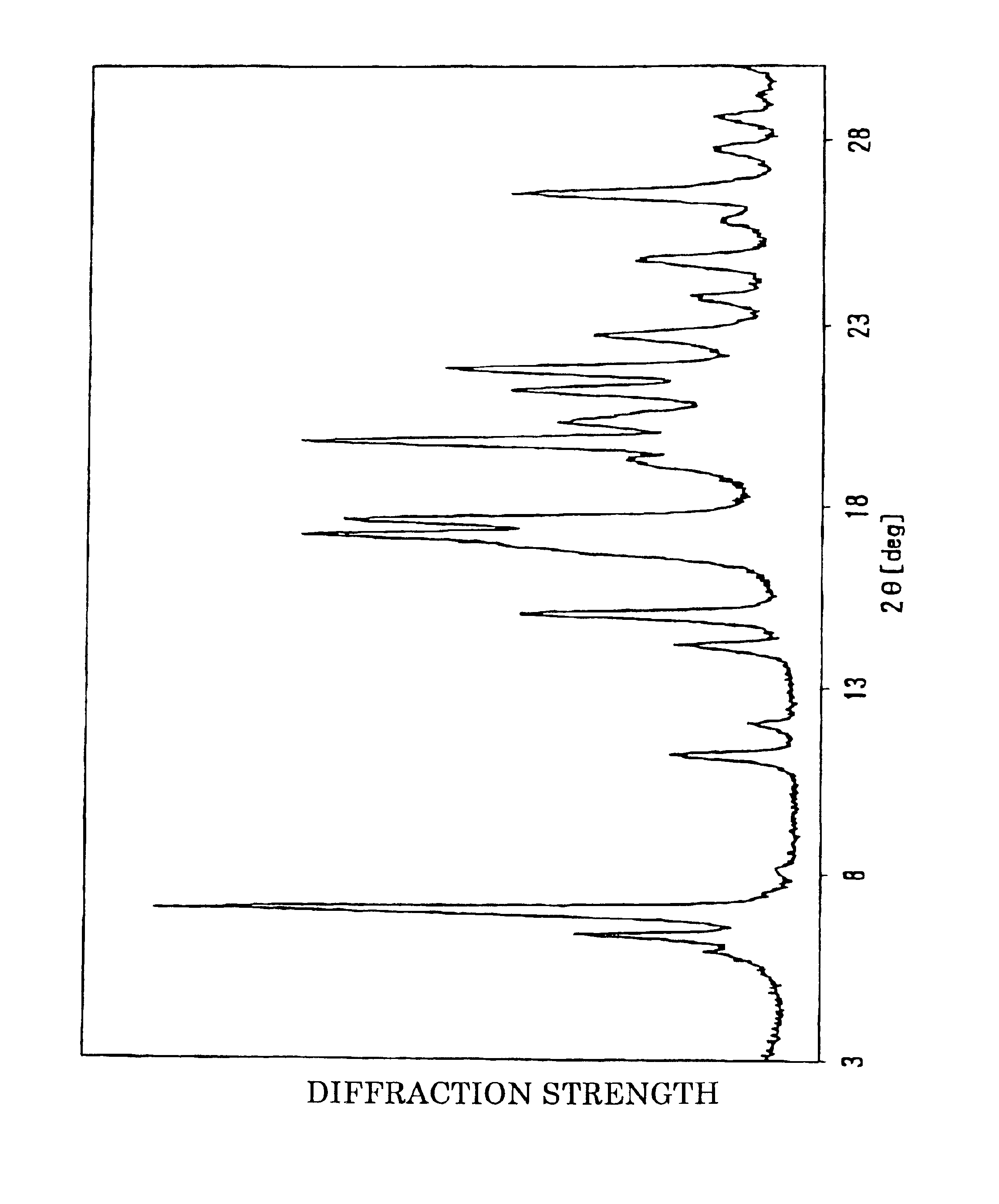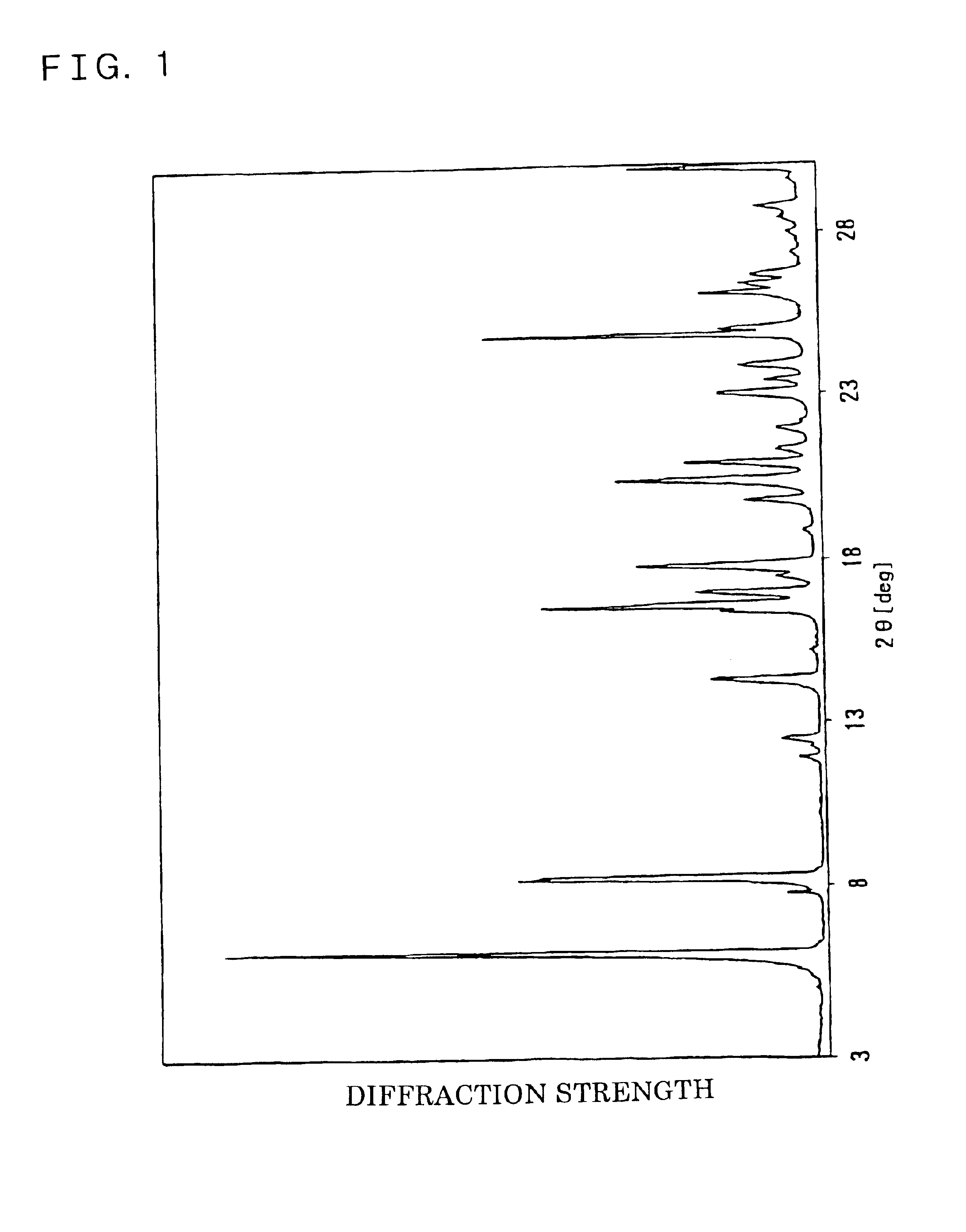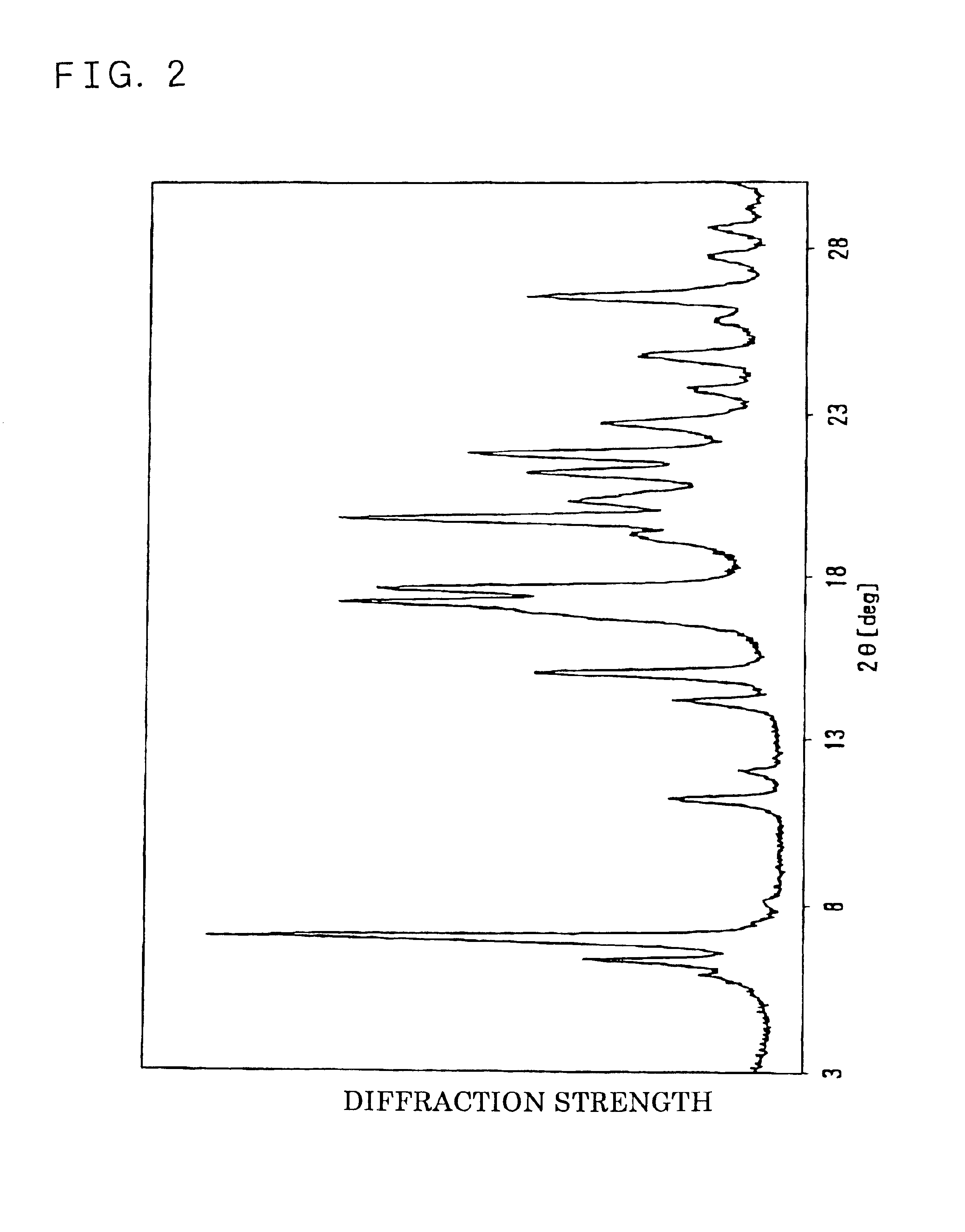Aspartame derivative crystal and process for producing the same
- Summary
- Abstract
- Description
- Claims
- Application Information
AI Technical Summary
Benefits of technology
Problems solved by technology
Method used
Image
Examples
reference example 2
Production of A-type Crystals
A part of N-(3,3-dimethylbutyl)-APM prepared in Reference Example 1 was used to prepare 100 g aqueous solution of N-(3,3-dimethylbutyl)-APM at a concentration of 3% by weight (dissolved at 60.degree. C.). Then, it was cooled from 60.degree. C. to 30.degree. C. over 5 minutes under stirring. When the liquid temperature reached to 30.degree. C., crystallization of white crystals was initiated. After overnight aging with the liquid temperature kept at 30.degree. C., the crystals were collected by filtration. (a) The diffractive X-ray (X-ray diffraction pattern) of the wet crystals obtained above was measured by powder X-ray diffractometry using CuK.alpha. ray (line). The obtained powder X-ray diffraction pattern is shown in FIG. 1.
As is evident from the pattern of the figure, the wet crystals showed characteristic diffraction peaks at least at 6.0.degree., 24.8.degree., 8.2.degree., and 16.5.degree., indicating that the crystals were A-type crystals.
Further...
example 1
Production of C-type Crystals
The dried A-type crystals with a water content of 5% by weight described above continued to be dried in the vacuum dryer until their water content was reduced to 0.8% by weight. The average particle size (diameter) of the dried crystals (raw powder) was about 50 .mu.m.
The diffractive X-ray (X-ray diffraction pattern) of the dried crystals was measured by powder X-ray diffractometry using CuK.alpha. ray. The obtained powder X-ray diffraction pattern is shown in FIG. 2.
As is evident from the pattern of the figure, the dry crystals showed characteristic diffraction peaks at least at 7.1.degree., 19.8.degree., 17.3.degree., and 17.7.degree.. As described above, the crystals are C-type crystals.
example 2
Production of Granules of C-type Crystals
The C-type crystals (original (raw) powder with an average particle size (diameter) of 50 .mu.m) obtained in the same manner as in Example 1 were introduced in an amount of about 300 mg for each operation into a tabletting mortar with an internal diameter of 8 mm and a depth of 12 mm, and subjected to dry compression molding for making tablet at 300 kg / cm2G with "High Pressure Jack J-1 type" (manufactured by Iuchi Seieido), finely divided, and screened to give granule fractions having particle size in the predetermined ranges (100 to 500 .mu.m and 500 to 1,400 .mu.m).
PUM
| Property | Measurement | Unit |
|---|---|---|
| Percent by mass | aaaaa | aaaaa |
| Angle | aaaaa | aaaaa |
| Angle | aaaaa | aaaaa |
Abstract
Description
Claims
Application Information
 Login to View More
Login to View More - R&D
- Intellectual Property
- Life Sciences
- Materials
- Tech Scout
- Unparalleled Data Quality
- Higher Quality Content
- 60% Fewer Hallucinations
Browse by: Latest US Patents, China's latest patents, Technical Efficacy Thesaurus, Application Domain, Technology Topic, Popular Technical Reports.
© 2025 PatSnap. All rights reserved.Legal|Privacy policy|Modern Slavery Act Transparency Statement|Sitemap|About US| Contact US: help@patsnap.com



